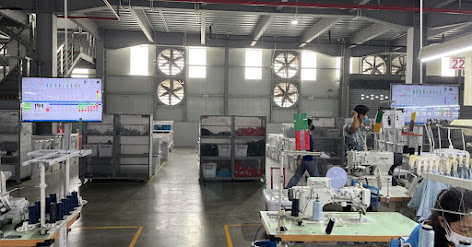What is a Warehouse Management System WMS and Types?
At first, warehouse inventory management systems could only do simple things, like tell you where Who stored items. WMS can now do many things, from basic best practices for picking, packing, and shipping to complex programs that coordinate complex interactions with material-handling devices and yard management.
A warehouse management system can make mistakes less likely to happen when a product is sent out. The system can also help the company fill orders faster and find ordered items in the warehouse right away.
The main goal of warehouse management software is to create a paperless environment that automatically tells your employees how to pick, put away, and ship your products in the best way.
Software for managing a warehouse
WMS software helps receive and put away inventory, pick and ship orders, and restock inventory.
Warehouse inventory management software can have many features, from basic best practices for picking, packing, and shipping to complex programs that coordinate complex interactions with material-handling devices and yard management.
Sorts of Warehouse Management Systems
There are different kinds of Warehouse Management Systems, and each one has its pros and cons. Here are some of the most common types:
Standalone System ERP Modules
A cloud-based warehouse management system that stands alone
A stand-alone warehouse management system is a typical on-site system set up on the business's own hardware and network.
Most WMS systems are third-party, stand-alone packages that must connect to the rest of your business management software (such as ERP). Even though integrating external programs can work, the process is often complicated and full of problems, such as duplicate data entry, information delays, silos, interface issues, and customization costs.
These systems often have the lowest long-term costs, but they don't have the benefits of a better integrated WMS.
Cloud-based system for running a warehouse
Cloud-based software for managing a warehouse
A cloud warehouse management system is a software as a service (SaaS) model that uses enterprise cloud technology.
Cloud-based WMS software has many benefits, such as better security, disaster recovery, scalability, and flexibility. Cloud computing also lets users get automatic software updates without spending more capital. This makes technology more competitive.
ERP Modules
Some ERP providers, like IQMS, include a warehouse management system as part of their ERP solution. This solution has built-in EDI, accounting, sales orders, MRP, and shipping management. There are no messy interfaces that don't work in real-time.
Pros of a WMS and ERP system that work together
Pros of a Fully Integrated WMS
There are many benefits to an integrated WMS/ERP solution.
With a native WMS program, you can track things across your whole business, hold employees accountable, and improve speed and responsiveness in real-time.
You can move from pen and paper to a digital WMS environment with the help of scan guns and barcodes. This eliminates the need to re-key data and the inevitable human error that comes with it.
Many more differences make up an ERP hosting model that you should consider before deciding which deployment option is best for your business.
An entire warehouse management system has many benefits, such as:
- Less time to complete
- More accurate inventory
- Better service to customers
- Greater space utilisation
- improved warehouse efficiency
- cost of labor went down
You should ask yourself two critical questions:
Can your bolted-on WMS software automatically tell you about order changes from incoming EDI documents and show you how much inventory you have and where it is?
Can it tell you in real-time how many parts the manufacturer still needs to make before the order is ready to ship?




Comments
Post a Comment